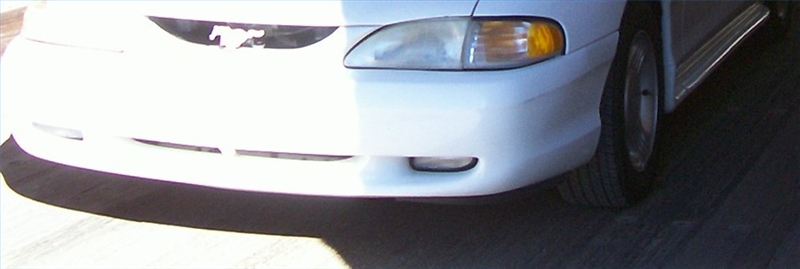
Fog lights are designed to be used when driving through not just fog, but also snowstorms or other adverse driving conditions. Low visibility is dangerous on a city road, but driving through the country or in a new area during a snowstorm or fog increases your danger and the potential for an accident. Turning the car's high beams on generally makes driving in a fog much worse. The light reflects on the water or snow, causing the light to bounce back into your eyes, creating blind spots.
Fog lights produce a wide beam of extremely bright lights that seem to cut through the fog, increasing your visibility. However, fog lights do not mean you can safely travel the posted speed limit. Common sense must prevail as you slow down, increase the space between your vehicle and the next, and stay in the slow lane. If the fog is too dense, take the next exit and find a safe place to park and wait until the fog lifts. Fog actually is a vapor that sits about 18 inches above the ground, which is why fog lights are aimed a bit lower than that, usually around 14 inches above the ground.
Fog lights don't need to run during the day, but if they are installed correctly, they will not be a hindrance to drivers. Correct installation of fog lights begins with their location. The Society of Automotive Engineers (SAE) has set some guidelines for the installation of fog lights. The SAE states the lights should be between 10 and 14 inches from the ground. To ensure that the lights are even after installation, park your car on a level surface, 25 feet from a flat wall (or garage door). Measure from the center of the light to the ground. Go to the wall and measure the same distance and draw a line. With the fog lights tuned on, the beams should shine approximately 4 inches below the line you drew on the wall. If not, you need to adjust your fog lights either up or down appropriately. This step is important because you do not want the high intensity fog lights to shine into an oncoming car driver's eyes, which could cause an accident.
The most common fog lights used on a vehicle are in the front bumper. They should be mounted to SAE standards. In most cases, the fog lights will be operated by a switch separate from your car's lights. Turn them on during the times of deep fog or snowstorms. Fog lights mounted on the rear bumper of your vehicle act as a warning to oncoming traffic during foggy drives. However, they must also be aimed correctly to avoid glare and a blind spot to the oncoming driver.
Fog lights mounted on a truck's light bar or roof are becoming increasingly popular. Although, in some cases, the lights are just for show, when used properly, the fog lights can add to your safety. When mounted on a truck's roof, extra care must be taken to set the lights at the right angle to give you benefit while not blinding other drivers.
Be a courteous driver when driving through fog. Using your fog lights will enhance your ability to see, but you must still drive at a slow pace that allows others to see and react to your vehicle. Using your four-way flashers can help ensure that the oncoming driver sees you, and hopefully he will also slow down to a safe speed. Driving cautiously will help prevent accidents.